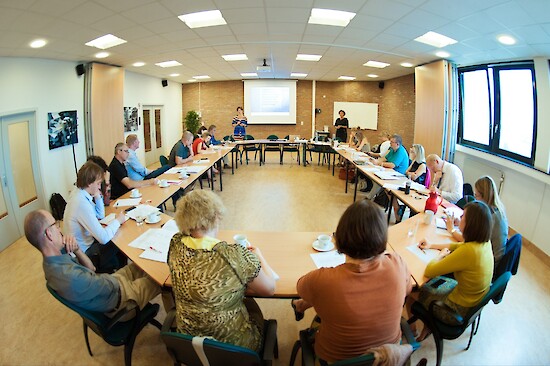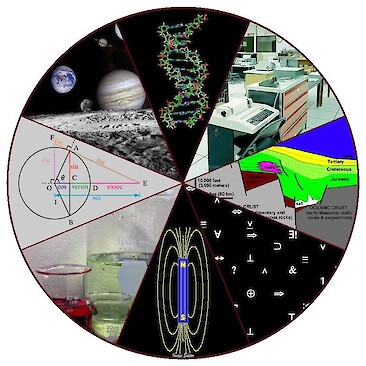Unlocking the Power of Stakeholder Engagement: A Journey to Holistic and Sustainable Solutions
Benjamin Komolafe ·Imagine a well-established family of adults planning a big family reunion abroad, fantastic right? Everyone has their own ideas about where to go, what to do, and how to get there to have an enjoyable vacation. How can you bring all these voices together to plan the ultimate trip that satisfies everyone's desires?
One way to do it, and often the most effective way, is by incorporating relevant principles or qualities such as open communication, inclusivity, collaboration, feedback mechanism, negotiation, and compromise, as well as adaptability in the decision-making process.1,2,3,4
This approach to problem-solving exemplifies what stakeholder engagement is all about. From an academic standpoint, the phrase "stakeholder engagement" can be a debatable concept encompassing a wide range of practices that vary depending on the context. In the realm of natural resource management and environmental problem-solving, stakeholder engagement entails involving stakeholders in planning or decision-making processes to blend their insights and principles with the specialized knowledge and objectives of a specific project.5 and in this context, Stakeholders will mean, individuals, groups or organizations who can affect, or will be affected by, the outcome of a project, management, policy or scheme6 and from a research viewpoint, these are those who are affected by the environmental problem being researched and those in the power to do something about it.


Who or what constitutes stakeholders can be very project-specific as they may include people, but also groups, neighborhoods, organizations, institutions, and societies. When identified and defined for a project through detailed stakeholder analysis, they play a vital role in helping to actualize project outcomes that reflect the collective interests and preferences of a group otherwise known as co-production.
In our class discussion on stakeholder engagement and co-production for the Science for Environmental Management. We delved deep into this concept, looking at the theory and practice of involving stakeholders in environmental problem-solving. Colleagues shared interesting insights about the different levels of engagement, from simply informing stakeholders to empowering them to act. By involving stakeholders early in the life of a project we can tap into their knowledge, expertise, and lived experiences of a diverse group of stakeholders. This will help to enhance the science production process and co-produce more holistic and effective solutions with better outcomes.
One key takeaway from this discussion was that while stakeholder engagement in environmental research can be a powerful tool for driving positive change, developing an understanding of who, how, and when to engage, as well as the extent of such engagement through a detailed stakeholder analysis at the planning phase of a project, can be critical. This ensures that a desirable outcome is achieved from the stakeholder engagement.
This is particularly true because stakeholder engagement with its associated challenges (e.g. time, resources, appropriate skill sets etc.), can turn out to be a two-edged sword that can make or mar the project if not properly done as seen too often in poorly developed projects and even in our daily lives such as in the aforementioned family reunion scenario, the vacation may very well not see the light of day if stakeholder engagement fails!
To overcome this challenge, a recommended best practice requires that stakeholder engagement at the very least is matched with the level of the problem complexity (e.g. simple, complicated, and complex), and this brings to mind the concepts of single-disciplinary, multi-disciplinary, interdisciplinary and transdisciplinary approaches to environmental problem-solving. While a single-disciplinary approach may very well suffice for simple issues, as complexity rises from complicated to complex, a multidisciplinary or interdisciplinary approach becomes necessary, with complex problems often requiring a transdisciplinary approach.
All these approaches to problem-solving require some level of stakeholder engagement. Bringing back points touched on in class, the consensus is that effective stakeholder engagement at its full scale is foundational to the transdisciplinary approach. This is because this process of transdisciplinary approach, regardless of the name you call it – whether holistic, actionable science, engaged scholarship etc., goes beyond traditional disciplinary boundaries. It, brings together experts from diverse fields – think scientists, policymakers, community leaders, and more to tackle complex environmental problems.

This transdisciplinary approach to problem-solving is crucial to effectively addressing many of our modern-day (people-oriented) environmental problems and socioeconomic issues. These issues have implications for environmental management, including global sea level rise, invasive species, food security, clean water provisions, and sanitation, among others. Notably a common descriptor across these problem sets can be likened to puzzles with pieces scattered across different rooms, and any successful attempt at solving such a puzzle must first bring all those pieces together in one place, where everyone can see the big picture and work together in a transdisciplinary manner and co-create the common desired solution.
Effective stakeholder engagement in transdisciplinary research does not come cheap and doesn’t just happen by chance – it takes careful planning and preparation. In our discussion, we emphasized the importance of setting clear goals, securing funding, and building strong partnerships with stakeholders from the outset. By investing time and resources in planning, we can lay the groundwork for successful collaboration during implementation and ensure that everyone is on the same page from day one.
Finally, the transdisciplinary science process must integrate measures to track progress and continuously evaluate the success of the project. This is as crucial as the planning and implementation phases. By collecting data, soliciting feedback, and monitoring progress, we can continuously improve our efforts and ensure that we're making a real difference.
References
- Schmidt, L., Falk, T., Siegmund-Schultze, M and Spangenberg, J.H (2020). The Objectives of Stakeholder Involvement in Transdisciplinary Research. A Conceptual Framework for a Reflective and Reflexive Practise, Ecological Economics, Volume 176: 106751, ISSN 0921-8009, https://doi.org/10.1016/j.ecolecon.2020.106751
- Boaz, A., Hanney, S., Borst, R, O’Shea, A, Kok, M (2018). How to engage stakeholders in research: design principles to support improvement, Health Research Policy and Systems 16:60 https://doi.org/10.1186/s12961-018-0337-6
- Association for Project Management (2024). 10 key principles of stakeholder engagement https://www.apm.org.uk/resources/find-a-resource/stakeholder-engagement/stakeholder-engagement-key-principles/ Accessed 02/26/2024
- Dennilson, B. (2017). Transdisciplinary literacy: Seven principles that help define transdisciplinary research https://ian.umces.edu/blog/transdisciplinary-literacy-seven-principles-that-help-define-transdisciplinary-research/ Accessed 02/26/2024
- Talley, J. L., Schneider, J., and Lindquist, E. (2016). A simplified approach to stakeholder engagement in natural resource management: the Five-Feature Framework. Ecology and Society, 21(4). http://www.jstor.org/stable/26270020
- Freeman, R. E. (1999). Divergent stakeholder theory. Academy of Management Review 24(2):233–236. http://dx.doi.org/10.5465/ amr.1999.1893932
About the author
Benjamin Komolafe

Benjamin Komolafe is a first-year PhD student in Marine-Estuarine Environmental Sciences (MEES) at the University of Maryland Eastern Shore, training under the tutelage of Drs Ali Ishaque and Paulinus Chigbo as his advisors. With a focus on ecotoxicology, his research centers on identifying and assessing the ecological impacts of emerging contaminants in stormwater from disadvantaged communities in the Chesapeake Bay Watershed, using the Eastern Oyster as a model species.
Ben holds a bachelor's degree in Environmental Biology from the University of Benin and a master's degree in Environmental Toxicology from the University of Lagos, Nigeria. He brings over a decade of work experience to his studentship, having worked in core technical environmental consulting and more recently in ESG and Sustainable Finance at Ernst & Young, where he supported financial institutions and corporates in sustainability management.
Passionate about bridging science with policy, Ben aims to build strong research experience that will empower him to play a significant role in the effective synthesization and communication of science to decision-makers and other non-science stakeholders in environmental management.
Next Post > CERF Conference in Portland Oregon
Comments
-
Antonia Zais 2 years ago
Great blog, Ben! I really enjoyed how you centered the transdisciplinary approach around its inherently humanistic nature. Recognizing the human aspect of environmental problem solving is crucial to creating successful and meaningful solutions.
-
COLIN SCOTT VISSERING 2 years ago
Ben - I really enjoyed your engaging blog. I must say my favorite quote is "Effective stakeholder engagement in transdisciplinary research does not come cheap". It is so much easier for us to focus on the science for which we are experts, but without making the effort to engage stakeholders in the broader world, that knowledge would not have the opportunity to become transformational for society. I do however think that stakeholder engagement is less challenging than planning a family vacation sometimes...
-
Kayla 2 years ago
The analogy of the puzzle pieces in different rooms is perfect! Yes, bringing them into the same room is only the first step of many
-
Meghna Mathews 2 years ago
Ben, this is such a great blog! I like how you started with the comparison of a planning a family vacation. It’s interesting to compare stakeholder engagement with something of every day life. I agree with you that the transdisciplinary approach to problem-solving is critical in effectively addressing many of our socioeconomic and socio-environmental issues. These problems can only be solved once multiple people are included in the process.
-
Joy 2 years ago
I agree with you. Issues addressed, need to be consistently monitored to ensure that there is progress if not, stakeholders need to come together to find a better way of tackling the issue in order to achieve optimal results. Great post!
-
Hannah Seddon 2 years ago
Great work Ben! Not only was the information valuable, but you explained it in a really entertaining and engaging way. I especially enjoyed your use of metaphors!
-
Samantha 2 years ago
Very nice. I enjoyed reading it. I really liked your opening paragraph. I also agree about the transdisplinary approach is best for stakeholder engagement and is the best way to secure a research project and build a foundation.
-
Gage Jacobs 2 years ago
Great blog post. It summarized what we all talked about in our discussion and expanded on it in a meaningful way. I quite like the puzzle pieces analogy, I may need to use it in the future!

